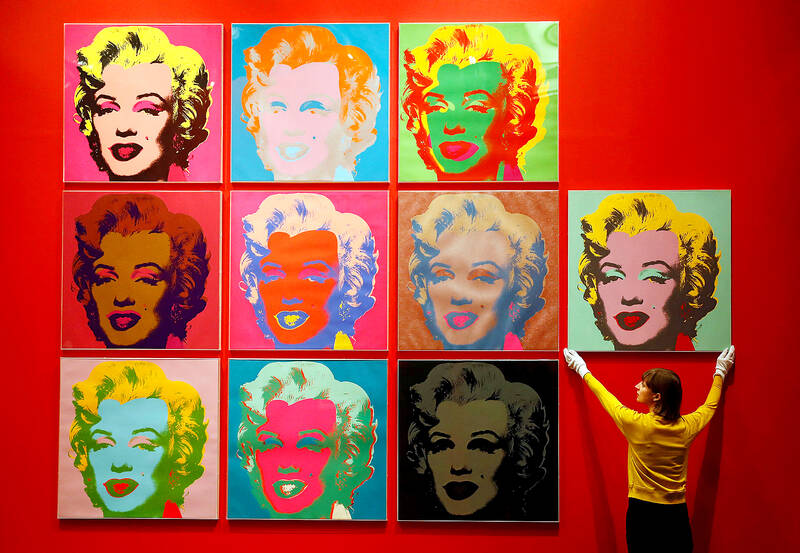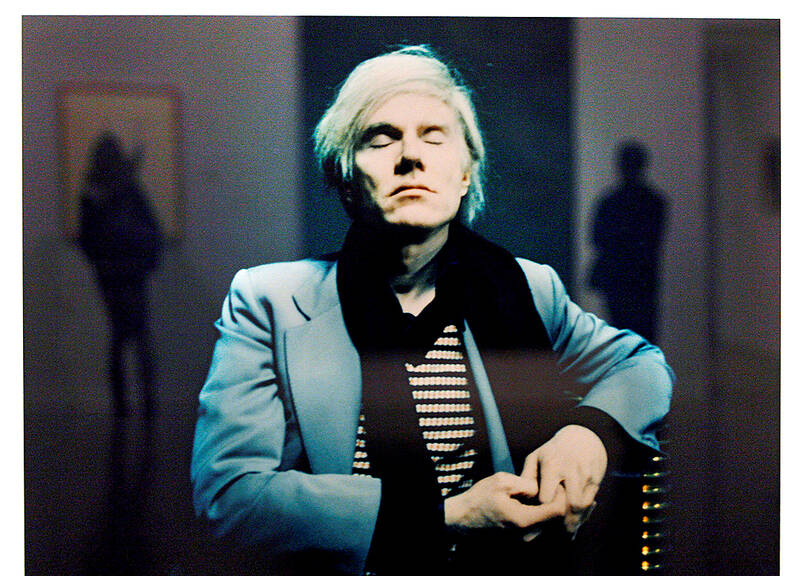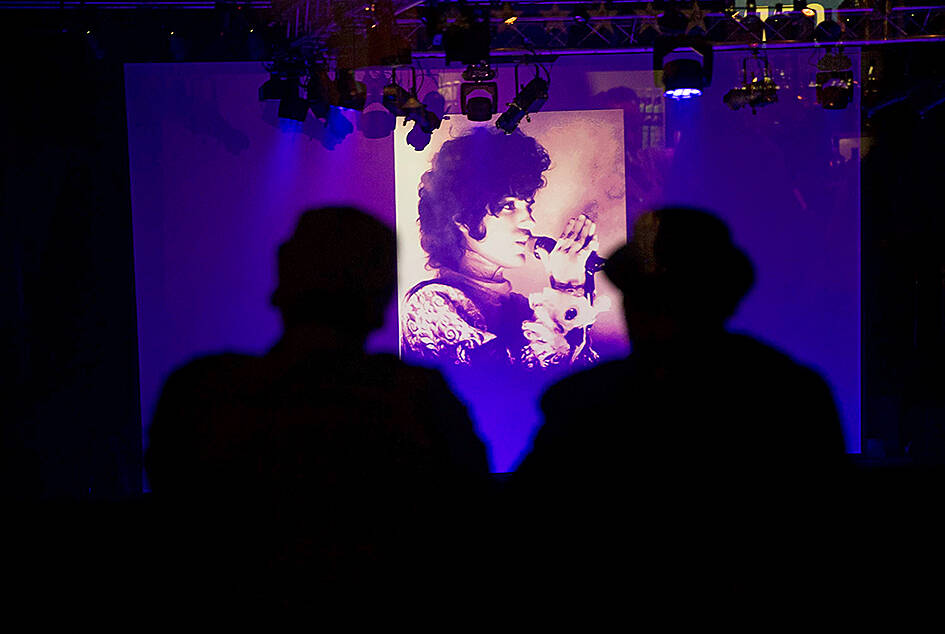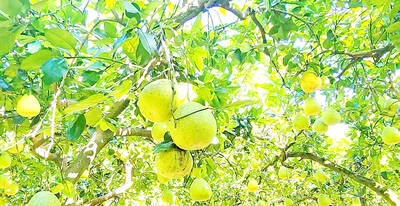Andy Warhol once said “Art is what you can get away with.” Now a legal fight surrounding his prints of Prince threatens to upend the world of pop art as well as music, books and videos.
In a fight that has outlived both men, the US Supreme Court will consider whether Warhol was within his rights to create 16 images of the musician in 1984 using a copyrighted photograph of the musician. The case could reshape the fair-use defense to copyright infringement for follow-on works, affecting music, videos and books, as well as Warhol’s iconic art.
IMPLICATIONS

Photo: Reuters
Both sides are emphasizing the potential stakes. The Association of American Publishers says expanding the fair-use defense could have a “catastrophic impact” on that industry, while representatives of the art community say the opposite result could have a chilling effect on artists and museums.
The case “is incredibly important to many, many people,” said Bruce Ewing, who co-chairs the intellectual property practice at Dorsey & Whitney in New York. “It has potential implications well beyond art. You’re talking about music, publishing, and many different types of creative industries.”
The showdown could draw the justices into an unfamiliar world, testing their eagerness — and perhaps ability — to assess differences between works of art or literature that share a common core.

Photo: Reuters
The path to the Supreme Court began in 1981 with a black-and-white photo taken of Prince by rock-and-roll photographer Lynn Goldsmith. Three years later, with Prince at the peak of his popularity, Vanity Fair paid Goldsmith a US$400 licensing fee so that Warhol could use the photo as an “artist’s reference” to create an image of the singer-songwriter for the magazine.
Warhol then created what became known as the Prince Series, consisting of 16 silkscreens, screen prints and sketches that gave his subject what the foundation called “a flat, impersonal, disembodied, mask-like appearance.”
Vanity Fair published one image in the 1984 issue. Warhol died three years later, and his copyrights were transferred to the Andy Warhol Foundation for the Visual Arts.

Photo: AFP
PRINCE’S DEATH
When Prince died in 2016, Vanity Fair parent Conde Nast paid the foundation US$10,250 to run a different image from the Prince Series on the magazine’s cover, without giving Goldsmith any additional payment or credit. Goldsmith then accused the foundation of copyright infringement.
A federal trial judge tossed out Goldsmith’s claim, but the New York-based 2nd US Circuit Court of Appeals reinstated it. The panel said Warhol’s image wasn’t “transformative” — and therefore wasn’t fair use — because it didn’t do enough to change the appearance of Goldsmith’s photo.
Warhol’s work “retains the essential elements of the Goldsmith photograph without significantly adding to or altering those elements,” Judge Gerard Lynch wrote for the appeals court.
At the Supreme Court, the foundation says the appeals court was wrong to focus solely on the visual appearance of the images. The foundation says the key question is whether the second work conveys a new “meaning or message.”
“While Goldsmith portrayed Prince as a vulnerable human, Warhol made significant alterations that erased the humanity from the image, as a way of commenting on society’s conception of celebrities as products, not people,” Roman Martinez, the foundation’s lawyer, argued in court papers. “The Prince Series is thus transformative.”
ALTERING A SONG
The foundation’s filing invokes Warhol’s famous Campbell’s soup can paintings — and a hint the Supreme Court may have dropped about those works last year. Ruling in a software copyright case, the court said a painting that replicates an advertising logo as “a comment about consumerism” may fall within fair use.
But Goldsmith says the foundation’s “meaning or message” approach would put judges in an impossible position.
“Courts cannot sensibly discern the meaning of art when artists, critics and the public often disagree about what art signifies,” contended Goldsmith’s lawyer, Lisa Blatt.
The brief points to Jackson Pollock, John Lennon, Pablo Picasso and Freddie Mercury as artists whose work defied any objective understanding, sometimes intentionally so.
“I’m looking to see if the justices understood any of the references to art and pop culture in the briefs,” Blatt quipped recently while speaking at Georgetown University Law Center.
Goldsmith’s brief also argues that the foundation’s “meaning or message” approach ignores the other fair-use factors listed in the 1976 Copyright Act, including the impact on the market for the original work.
Goldsmith has support from the Recording Industry Association of America and the National Music Publishers’ Association. The Motion Picture Association filed a brief that didn’t formally take sides in the case but said the Warhol position would “threaten the protection afforded all manner of copyrighted works.”
The Biden administration is also supporting Goldsmith, suggesting the court protect Warhol’s creation of the Prince Series but not the foundation’s commercial licensing of the Prince image. The images are now worth large sums of money, with one selling for US$173,664 in 2015.
That approach makes some art advocates uneasy. It makes no sense to say a work could be fair use when it’s created but not once it’s licensed or sold, said Jaime Santos, a Washington lawyer who filed a brief for a groups that include foundations for the late artists Robert Rauschenberg, Roy Lichtenstein and Joan Mitchell.
“There’s not a ton of confidence that those same principles won’t apply to the actual creation of the work itself,” Santos said. “So I think it really just kind of makes a mash of the case law and makes things pretty scary for anyone from museums to foundations to even smaller artists who are making works and using prior works as artists have done for centuries.”
The court is scheduled to rule by late June in the case, Andy Warhol Foundation v. Goldsmith, 21-869.

On Facebook a friend posted a dashcam video of a vehicle driving through the ash-colored wasteland of what was once Taroko Gorge. A crane appears in the video, and suddenly it becomes clear: the video is in color, not black and white. The magnitude 7.2 earthquake’s destruction on April 3 around and above Taroko and its reverberations across an area heavily dependent on tourism have largely vanished from the international press discussions as the news cycle moves on, but local residents still live with its consequences every day. For example, with the damage to the road corridors between Yilan and

May 13 to May 19 While Taiwanese were eligible to take the Qing Dynasty imperial exams starting from 1686, it took more than a century for a locally-registered scholar to pass the highest levels and become a jinshi (進士). In 1823, Hsinchu City resident Cheng Yung-hsi (鄭用錫) traveled to Beijing and accomplished the feat, returning home in great glory. There were technically three Taiwan residents who did it before Cheng, but two were born in China and remained registered in their birthplaces, while historians generally discount the third as he changed his residency back to Fujian Province right after the exams.

Few scenes are more representative of rural Taiwan than a mountain slope covered in row upon row of carefully manicured tea plants. Like staring at the raked sand in a Zen garden, seeing these natural features in an unnaturally perfect arrangement of parallel lines has a certain calming effect. Snapping photos of the tea plantations blanketing Taiwan’s mountain is a favorite activity among tourists but, unfortunately, the experience is often rather superficial. As these tea fields are part of working farms, it’s not usually possible to walk amongst them or sample the teas they are producing, much less understand how the

With William Lai’s (賴清德) presidential inauguration coming up on May 20, both sides of the Taiwan Strait have been signaling each other, possibly about re-opening lines of communication. For that to happen, there are two ways this could happen, one very difficult to achieve and the other dangerous. During his presidential campaign and since Lai has repeatedly expressed his hope to re-establish communication based on equality and mutual respect, and even said he hoped to meet with Chinese leader Xi Jinping (習近平) over beef noodles and bubble tea. More dramatically, as explored in the May 2 edition of this column,